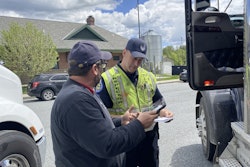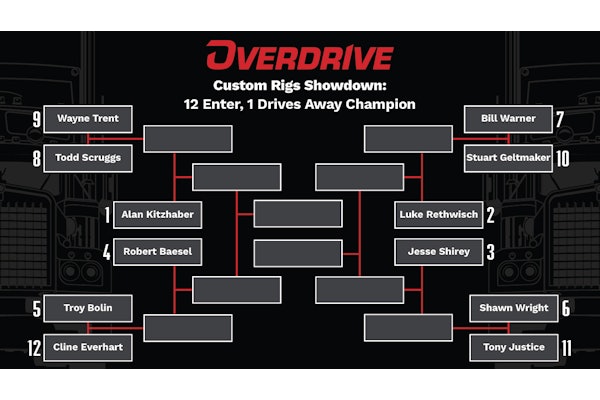
As of Monday, June 23, truck drivers and CDL applicants no longer have to submit a paper Medical Examiner’s Certificate to their state’s driver’s license agency -- at least in most states.
On Monday, the Federal Motor Carrier Safety Administration’s Medical Examiner’s Certification Integration (NRII) rule dating back a decade was implemented, which Department of Transportation Secretary Sean Duffy said replaces “outdated paper documents that are ripe for fraud, a hassle for truck drivers to maintain, and harder for law enforcement to assess.”
For truck drivers and other CDL holders and applicants, following a medical exam the examiner is now required to electronically transmit exam results to FMCSA by midnight of the next calendar day following the exam, and FMCSA will electronically transmit exam results to the state driver’s licensing agencies. States will then post the information on the Commercial Driver’s License Information System (CDLIS) driver motor vehicle record (MVR).
Medical examiners are no longer required to issue the original/paper Medical Examiner’s Certificate to CLP applicants and CDL holders, and those drivers are no longer required to submit those paper certificates to their states.

[Related: FMCSA med card transfer to states going electronic]
Additionally, motor carriers no longer have to verify that a Medical Examiner’s Certificate issued to a driver was issued by a medical examiner on the National Registry. Carriers can also no longer use paper certificates as proof of a driver’s medical certification. Instead, they must use the MVR obtained from the state and verify and document in the driver qualification file that the driver has a valid medical certificate and any required medical variances before allowing the driver to operate a commercial motor vehicle.
According to the U.S. DOT, 37 states are fully compliant with the new rule, and the remaining states are expected to meet all requirements in the coming months. More information on the rule can be found in this fact sheet.
States that have not yet implemented NRII are: Alaska, California, Florida, Illinois, Iowa, Kentucky, Louisiana, New Hampshire, New Jersey, New York, North Carolina, Oklahoma, Vermont and Wyoming. An updated list of states that have not implemented the rule can be found at the bottom of this linked page.
FMCSA has provided information here for licensing agencies, drivers, and medical examiners in states that have not yet implemented the rule. Drivers in states yet to implement the rule must continue to submit paper copies of their medical certificates to their state licensing agency. Regardless of where the medical exam is performed, the driver must ensure that the examiner issues them an original/paper Medical Examiner’s Certificate.
If a driver fails to submit their med cert to the state, the state is required to continue to update the medical certification status of a driver as “not certified” within 10 calendar days of the expiration of the certificate, the medical variance being rescinded, or the medical examiner's certificate being voided by FMCSA. The state must then initiate downgrading procedures within 60 days of the driver’s record being marked as “not certified.”
For drivers in states that have implemented the rule, FMCSA offers the following advice to ensure their certificates have been successfully transmitted and can legally operate:
- Begin the certification process with a medical examiner well in advance of the current Medical Examiner’s Certificate expiring to allow time for errors to be corrected in the driver data validation process if they occur.
- If you are a driver with a medical condition in which you believe the medical examiner may require supporting documentation from your treating clinician, be sure to bring it with you to your physical qualification examination to expedite the qualification decision.
- When completing the Medical Examination Report Form ensure that you provide accurate information exactly as it appears on your driver’s license, as these key identifiers (last name, DOB, licensing state, license number) will be used when transmitting the medical certification information from the National Registry to the state. If inaccurate information is provided, there will be an error, and your medical certification information will not be transmitted from the National Registry to the state.
- If a medical examiner’s office enters the results of your examination into the National Registry during your exam, this may be an opportunity for you to verify that all your information has been entered correctly. However, not every medical examiner enters the results of examinations in this manner, while the driver is present. Therefore, when possible, drivers are encouraged to review their information as the medical examiner has entered it into the National Registry system to ensure accuracy.
- Remind the medical examiner or their staff, if they do not ask, to make a copy of your driver’s license so they have it to refer to in case there is an error during the transmission of your information from the National Registry to the state.
- Ask the medical examiner the most efficient way for you to work with the medical office if you are aware that there is an issue with your physical qualification results posting to your MVR.
[Related: You failed your DOT physical. Now what?]













